TurboGrafx-CD
Top 10 Best TurboGrafx-CD Games of All Time!
The TurboGrafx-CD (known as the PC-CD in Japan) was an add-on for the TurboGrafx-16 that marked the first time the CD-ROM format was used for video games. It didn’t make a big impact in America, but its success in Japan paved way for the Sega CD and pretty much every other CD-based console. Rest assured, there was a reason why optical media was embraced by the industry. CDs were much cheaper to produce than traditional cartridges, and the added storage space gave developers the option of including cinematic cutscenes, voice acting, and Red Book audio in their games. While other CD-based systems were quick to embrace live action full-motion video, TurboGrafx-CD games were more heavily influenced by anime for the most part. By and large, the TurboGrafx-CD library was defined by intense shoot ’em ups, adventure games, and RPGs.
10
Lords of Thunder
1993
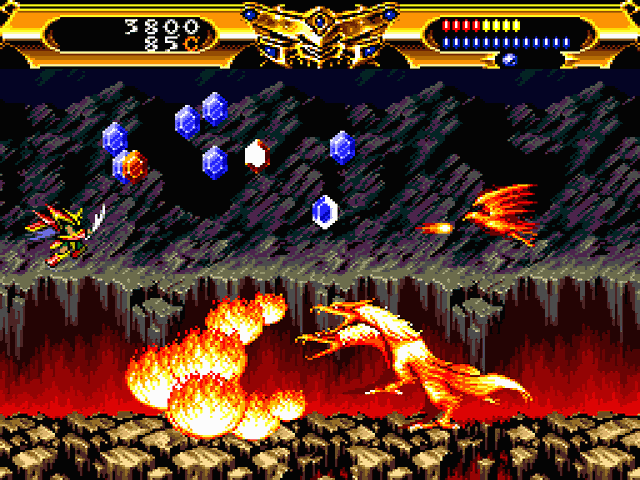
Lords of Thunder is a side-scrolling shoot ’em up and an unofficial follow-up to Gate of Thunder. There are a number of interesting twists that help the game stand out on a system flooded with shooters. Instead of piloting a common space ship, players assume the role of a heavily-armored winged warrior. This warrior has a variety of weapons at his disposal, and he can even use a sword for short-range attacks. The fantasy-based setting really helps distinguish the game from other shoot ’em ups from the era. Another aspect that defines Lords of Thunder is its monetary system. During the game, players will collect gems which can be used to purchase new items between levels. This effectively gives players the chance to increase their power meter, strengthen their armor, or stock up on bombs. Lords of Thunder has impressive parallax scrolling effects, imposing bosses, and endless waves of enemy fighters. The best thing about the game is the guitar-driven heavy metal soundtrack. Intense shoot ’em ups with impressive soundtracks were pretty common on the TurboGrafx-CD, but that’s something you’ll figure out on your own if you continue reading this list.
9
Sylphia
1993

Sylphia is a vertical shooter with a Greek mythology theme. Instead of a ship, players assume control of a beautiful winged goddess named Sylphia. Sylphia can obtain different weapons based on the four classical elements (fire, water, earth, and air) and also has access to numerous sub-weapons that include homing projectiles and rotating rock shields. The game has a lot of fun with the ancient Greek setting, and the enemies help Sylphia stand out from most other games in the genre. As Sylphia embarks on her mission to protect her homeland, she’ll encounter bare-breasted harpies, trident-bearing dragons, and a number of colossal gladiator-inspired bosses. It has been said ad nauseam, but Compile were masters of their craft and developed many of the best shoot ’em ups of all time. Sylphia is relatively short and easy compared to some of Compile’s best games, but it’s enjoyable while it lasts. The $120 price tag it commands might be a little steep for most people, but every fan of the genre should find a way to experience it.
8
Ginga Fukei Densetsu: Sapphire
1995

Ginga Fukei Densetsu: Sapphire is a vertically-scrolling shooter from Hudson and one of the most technically impressive games ever released for the PC Engine. The game hit store shelves after the Saturn and PlayStation were already on the market, but its use of parallax scrolling effects and pre-rendered sprites allowed the game to hold its own against the next generation of consoles. The game gives players the option of choosing between four different ships, but the gameplay is pretty straightforward for the most part. Every other aspect about the game is overflowing with creativity, however. Each stage in the game looks completely different from the next. One minute, you’ll be fighting robots above a futuristic city; and the next, you’ll be battling massive dragons in ancient times. Like most shooters, Sapphire throws countless waves of mindless enemy fighters at the player en route to an imposing boss battle. In Sapphire‘s case, there are actually several bosses in each level. You encounter rolling tanks that take up the entire width of the screen, flying polygonal robot skulls, and kabuki warriors who transform into demonic beasts. With cute policewoman protagonists, an unforgettable guitar-driven soundtrack, and a multitude of incredible boss battles, you’d think that Sapphire would be remembered as a classic. Unfortunately, most gamers are completely unaware of its existence since Sapphire was never released outside of Japan and didn’t have a wide release. The game is so rare today that a copy can set you back $800 or more.
7
Snatcher
1992

Snatcher is a cyberpunk adventure game that takes inspiration from American films like The Terminator and Blade Runner. The story takes place in the future and revolves around a detective who has been assigned to hunt down robotic life forms known as “snatchers” who have developed a nasty habit of killing humans and taking their places. Gross! Adventure games are a hard sell for people who like action, and the simple menu driven interface won’t appeal to everyone. Despite how you may feel about the genre, there’s little doubt that Snatcher has one of the most interesting stories ever seen in a video game. The characters are complex, the setting is fully-realized, and the story is paced in a way that keeps you on the edge of your seat the whole time. Snatcher was written and directed by Hideo Kojima, and it still stands as one of the most interesting games he’s ever worked on. It’s full of suspense without ever becoming too convoluted. Snatcher was originally released for the MSX2 and PC-88 in 1988, but the PC Engine CD version featured improved graphics and sounds. More importantly, it also extended the script to include a third act that gave closure to the story.
6
Spirit Soldier Spriggan
1991

Spirit Soldier Spriggan is another fantastic vertically-scrolling shooter from Compile. The game is similar to other Compile games like M.U.S.H.A. and Robo Aleste in that it lets players take control of giant flying robots. Instead of using an ancient Japanese setting, however, Spriggan is set in a medieval, fantasy-oriented world with steampunk themes. Compile shooters are well-known for their deep power-up systems, and Spirggan is no exception. The weapon system in the game revolves an assortment of colored orbs. The player can hold up to three of these orbs at any time, and the various combinations of colors will determine what weapons the player can use. There are literally dozens of combinations available, and a certain degree of experimentation is required to find your preferred weapon. If necessary, players can also sacrifice their orbs by using them as bombs. This is a handy option to have, as the screen is usually crawling with enemy fighters. No matter how hectic things get, the game never slows down. Spirggan is easily one of the most intense shooters of all time.
5
Puyo Puyo CD 2
1996

The Puyo Puyo games give players the simple goal of arranging falling blobs in an effort to group similar colors together. The games aren’t all that different from other “falling blocks” puzzle games from the era, but they gained a lot of attention since they gave players the ability to set up combos. Instead of merely rewarding the player for their success, the game also punishes their opponents! Clearing out multiple blobs with a single move will cause “garbage blobs” to fall into your opponent’s playing area. This encourages players to think quickly enough to set up their own combos before their opponent has a chance to mess them up. The games allow players to compete against a variety of interesting computer-controlled opponents, but the two-player mode is where the series truly shines. Puyo Puyo was a surprise hit in 1991, but the sequel reached new heights a few years later thanks to a few experimental gameplay changes that ultimately led to longer matches. Puyo Puyo CD 2 was basically a direct port of the arcade game, but the characters were fully voiced. This voice won’t matter much if you don’t understand Japanese, and I would rather have had the CD format been used for an enhanced soundtrack. Regardless of how well it uses the CD medium, Puyo Puyo CD 2 is a timeless puzzle game.
4
Ys Book I & II
1989
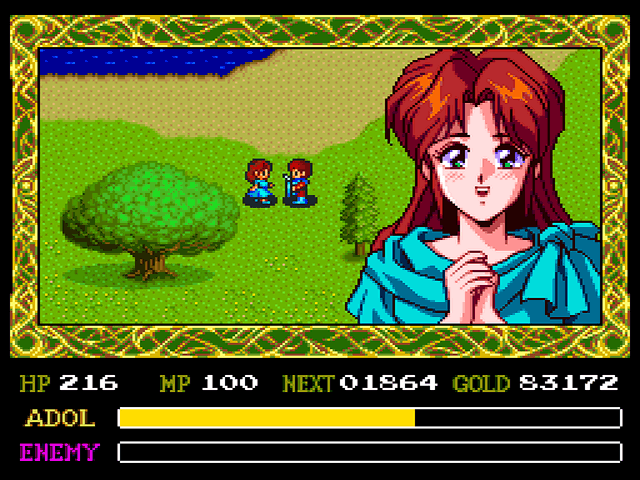
Ys Book I & II is an overhead adventure game and the first killer app for the TurboGrafx-CD. It would be easy to compare it to other action/RPGs like Zelda, but Ys leans more heavily on its RPG elements. The game features many standard RPG elements like experience points and an inventory system. At the same time, combat is ridiculously simple. So simple, in fact, that there isn’t even an attack button! You essentially defeat your enemies by walking right into them. (Rest assured, mowing down enemies left and right by running into them is a lot of fun.) The simple combat system doesn’t mean that the entire game is shallow. Ys has a captivating story, intriguing characters, and an epic quest. Back in 1990, the incredible cutscenes and voice acting made Ys Book I & II one of the first games to really validate the CD format. Also, Ys features one of the single most legendary video game soundtracks of all time. As the title suggests Ys Book I & II is essentially two separate games in one. Since they flow so perfectly into one another, I decided to break my own rule about not including compilations.
3
Gate of Thunder
1992

The TurboGrafx was home to many brilliant shoot ’em ups, and Gate of Thunder is yet another example. The intense side-scrolling shooter was included as a pack-in with the TurboDuo in North American and has earned a reputation as one of the console’s most popular games. The game contains all of the fundamental elements you would expect to find in a ’90s era shoot ’em up. Some of the game’s locations include asteroid belts, space stations, and mine fields. It’s standard fare for the most part, but the stages themselves boast impressive scrolling and some cool 3D effects. The power-ups are pretty typical as well, and include homing missiles, shields, and satellite support ships. Gate of Thunder clearly doesn’t attempt to rewrite the book on 2D shooters, but it’s still one of the best in the genre. One area in which Gate of Thunder goes well beyond the status quo is in its soundtrack. The guitar-driven, adrenaline-pumping, rip-roaring music is downright incredible and easily ranks among the best on the console. The quality of the game’s Red Book audio is impressive to this very day and it helped accentuate the benefits of the CD format.
2
Downtown Nekketsu Story
1993

Downtown Nekketsu Story is a port of a Famicom/NES game that American gamers know as River City Ransom. On the surface, the game is a pretty typical beat ’em up. The basic goal is to beat up legions of street thugs. There are several interesting weapons to use along the way, and two people can play the game at the same time. What places the game in the upper-echelon of the genre is its innovative monetary system. After kicking the shit out of your rivals, you can take their money and hit the town! There are a wide variety of shops to visit – ranging from sushi bars to health spas. You can buy food to replenish your health, vitamins to increase your stats, or books to learn new moves. The PC CD version of the game displays more colors than the NES original, and the characters and backgrounds are a little bit more detailed. The differences in the sound department are more significant since the PC CD version features arranged Redbook audio and fully voiced characters. (As an aside, the Dragon Twins theme is one of the best music tracks to ever grace a video game!) The gameplay differences between the NES and PC CD versions are negligible, but Downtown Nekketsu Story stands as one of the very best beat ’em ups of all time regardless of what platform you play it on.
1
Dracula X: Rondo of Blood
1993

Simply put, Rondo of Blood is the best traditional Castlevania game ever created. Some of the refinements introduced in Super Castlevania IV are M.I.A. (including multi-directional whipping and the ability to control your jumps in mid-air) but the game more than makes up for these omissions. Dracula X is decidedly less linear than previous Castlevania adventures, and features multiple paths to take. Throughout the course of the game, you’ll use your whip to discover breakable walls, push over tombstones to find hidden passages, and make leaps of faith to reach new areas. While you’ll only have to play through seven levels to reach the end, there are five additional secret areas to find. The levels themselves are downright incredible. The prologue involves a confrontation with Death while racing to Castlevania via horse and carriage. From there, you’ll work your way through a burning town from Castlevania 2, run away from a gigantic bull demon, and venture down the side of a mountain on a raft. There are also four maidens to rescue along the way, and one of them actually becomes a playable character! Maria can’t take as much damage as Richter can, but she moves faster, uses a unique set of sub-weapons, and has a special double jump ability that adds a new dynamic to the game. Dracula X makes great use of the CD format, with anime cut scenes, voice acting, and a brilliant soundtrack. The game also boasts some of the most impressive graphics of the era. The backgrounds were highly detailed, the special effects were breathtaking, and the sprites looked exceptional. (Nearly half of the sprites used in Symphony of the Night were taken directly from Dracula X!) While the original version of Dracula X was left in Japan, western gamers were given a inferior SNES version two years later that featured the same story but had dull visuals, poor level design, and fewer secrets.

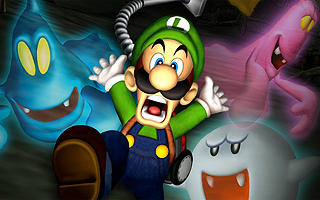
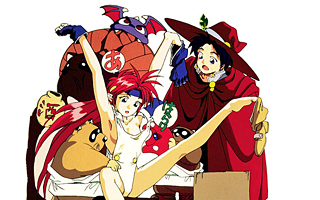
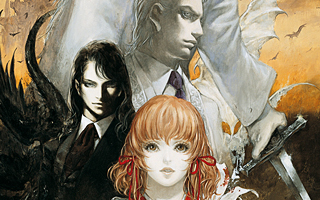
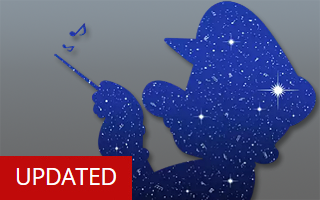
Do you agree with this list? Let us know what you think by leaving a comment below. Your opinion matters!